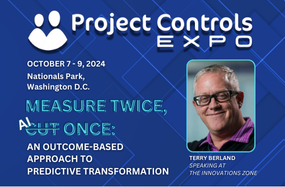
Advanced Guide to Global Cloud Solutions

IT decision-makers worldwide have been bombarded with countless articles, videos and white papers around the Global Cloud trend. The industry has made it clear that if you’re not on this band wagon, you’ll be left in the dust. But, what are some of the questions IT decision-makers should be asking themselves when looking to incorporate a Global Cloud solution? Fear not, LOADSPRING has you covered.
We sat down with our very own CTO, Cameron Vixie, and tapped into his wealth of knowledge on what IT decision-makers should consider when deciding to incorporate a Global Cloud solution for their enterprise. There’s more than meets the eye – take a look!
What can you achieve with a Global Cloud solution?
Generally, a critical problem is around performance for a geographically diverse workforce, so what they achieve through a Global Cloud is getting the applications closer to the end users. This gives everyone a better user experience, which includes improving software adoption and collaboration since the applications are in the Global Cloud.
The second main issue is around security and disaster recovery. Ensuring your project data is safe and recovery is possible in the chance of breach or data center meltdowns.
The main takeaway is if teams are diverse, then having a Global Cloud provides a better experience for everyone involved that use the same applications and enable IT to sleep better knowing it’s secure. Everyone benefits!
In your opinion, what should IT decision-makers be focusing their attention on?
When an IT decision-maker is looking to incorporate a Global Cloud solution for their enterprise, there are a staggering number of items to consider. A few of the key points include:
- Data locality laws and projects with data locality requirements for legal compliance
- Security in the event a data center gets hacked by those pesky cyber attackers
- Business requirements including if there’s a need to have geographic separation and drivers
- Users location in relation to the data centers – Impress upper management by using one facility versus two if possible to be more cost efficient.
Security of project data is a common concern. What is LOADSPRING offering that other Cloud providers do not?
While we believe our multi-layer security approach is better than other Cloud providers, we hold ourselves responsible for the security needs of the Customer’s environments. The Customer would have to do the bulk of the work, not the Cloud provider if they chose companies such as Amazon Web Service (AWS). LOADPSRING is the complete solution!
Additional LOADSPRING offerings include:
- Everything together in a one-stop shop package
- More security including anti-virus protection to block those headache-causing hackers
- Global management of the global environment from a User support application standpoint
- Centralized 24/7/365 support
- Prevention and next-generation firewalls with an eye for watching specific HTML traffic to ensure your data is secure
- Our near magical LOADSPRING CLOUD PLATFORM, which has an automatic admin and reporting feature setup
We also work hard to integrate as many things as possible to make the IT decision-maker’s job easier, faster and more efficient.
What’s the most important information to know when discussing a Global Cloud solution in regard to integrations?
One head scratching challenge with a Global Cloud would be if a Customer has multiple applications, meaning multiple integrations, which could be difficult for them to handle in-house. Architecting your integration to account for multiple instances of the applications is another factor to consider as well.
When should an enterprise use a Shared, Private or Global Cloud environment?
The Cloud environment evolution for an enterprise would consist of going from a:
Shared Cloud – They have limited or no integrations with a small application use case and there’s a limited number of users.
Private Cloud – They have more complex applications set with integrations, multiple applications, applications needing to speak with each other, 3rd parties requiring application access, developments and a need for added security.
Global Cloud – They have the business requirements, a global workforce which requires global access, and have dispersed teams.
These are just a few of the many head-turning items to consider when looking to incorporate a Global Cloud solution to take your enterprise to the next level. If you’re looking for additional information on how Global Clouds help with improving long distance collaborations click here. Better yet, contact us now at +1(978)685-9715 or information@loadspring.com to see how we can help you build your Perfect Cloud.








